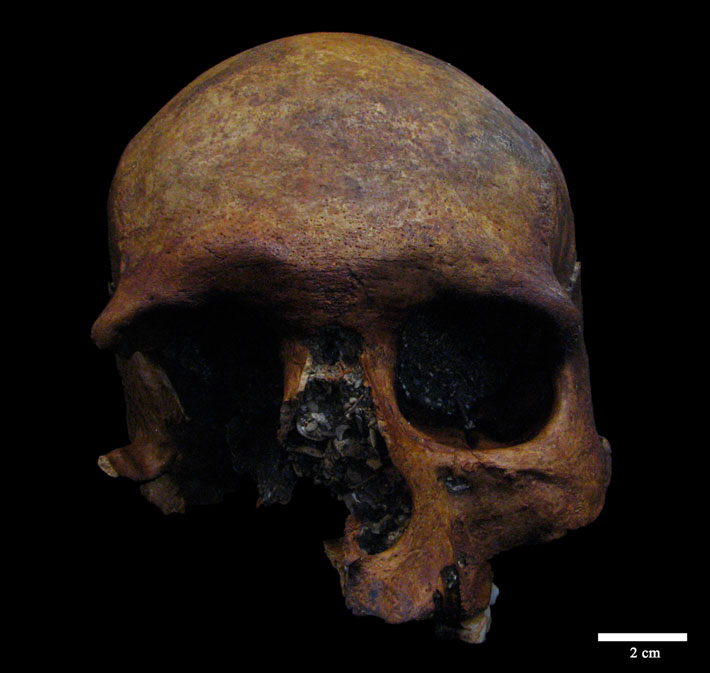 BURGOS, SPAIN—An examination of a cranium recovered by cavers from northern Spain’s Sima de Marcenejas has revealed evidence of a meningioma, or cranial tumor, according to a statement released by Spain's National Research Center for Human Evolution (CENIEH). Researchers from the CENIEH Conservation and Restoration Laboratory, the University of Alcalá de Henares, and Complutense University of Madrid determined that the skull belonged to a man who had lived during the Roman period. They created a 3-D model of his cranium with hundreds of X-ray images through micro-computed tomography. This process allowed the researchers to identify several lesions. Two of these wounds, located on the outside of the skull on what would have been the top of the head, appear to have been inflicted intentionally with sharp and blunt objects, and may have been the result of violence. The fourth lesion, found inside the skull, is thought to have been caused by a tumor. “What is interesting about this finding is that it offers a window onto the health of past populations, and raises fundamental questions for us about the ability of individuals to survive these conditions, and their quality of life thereafter,” said team member Daniel Rodríguez-Iglesias of CENIEH. Read the original scholarly article about this research in Virtual Archaeology Review. To read about a complex cranial surgery performed on an ancient soldier on the island of Thasos, go to "Around the World: Greece."
BURGOS, SPAIN—An examination of a cranium recovered by cavers from northern Spain’s Sima de Marcenejas has revealed evidence of a meningioma, or cranial tumor, according to a statement released by Spain's National Research Center for Human Evolution (CENIEH). Researchers from the CENIEH Conservation and Restoration Laboratory, the University of Alcalá de Henares, and Complutense University of Madrid determined that the skull belonged to a man who had lived during the Roman period. They created a 3-D model of his cranium with hundreds of X-ray images through micro-computed tomography. This process allowed the researchers to identify several lesions. Two of these wounds, located on the outside of the skull on what would have been the top of the head, appear to have been inflicted intentionally with sharp and blunt objects, and may have been the result of violence. The fourth lesion, found inside the skull, is thought to have been caused by a tumor. “What is interesting about this finding is that it offers a window onto the health of past populations, and raises fundamental questions for us about the ability of individuals to survive these conditions, and their quality of life thereafter,” said team member Daniel Rodríguez-Iglesias of CENIEH. Read the original scholarly article about this research in Virtual Archaeology Review. To read about a complex cranial surgery performed on an ancient soldier on the island of Thasos, go to "Around the World: Greece."
Traces of a Tumor Found in Roman-Period Skull in Spain
